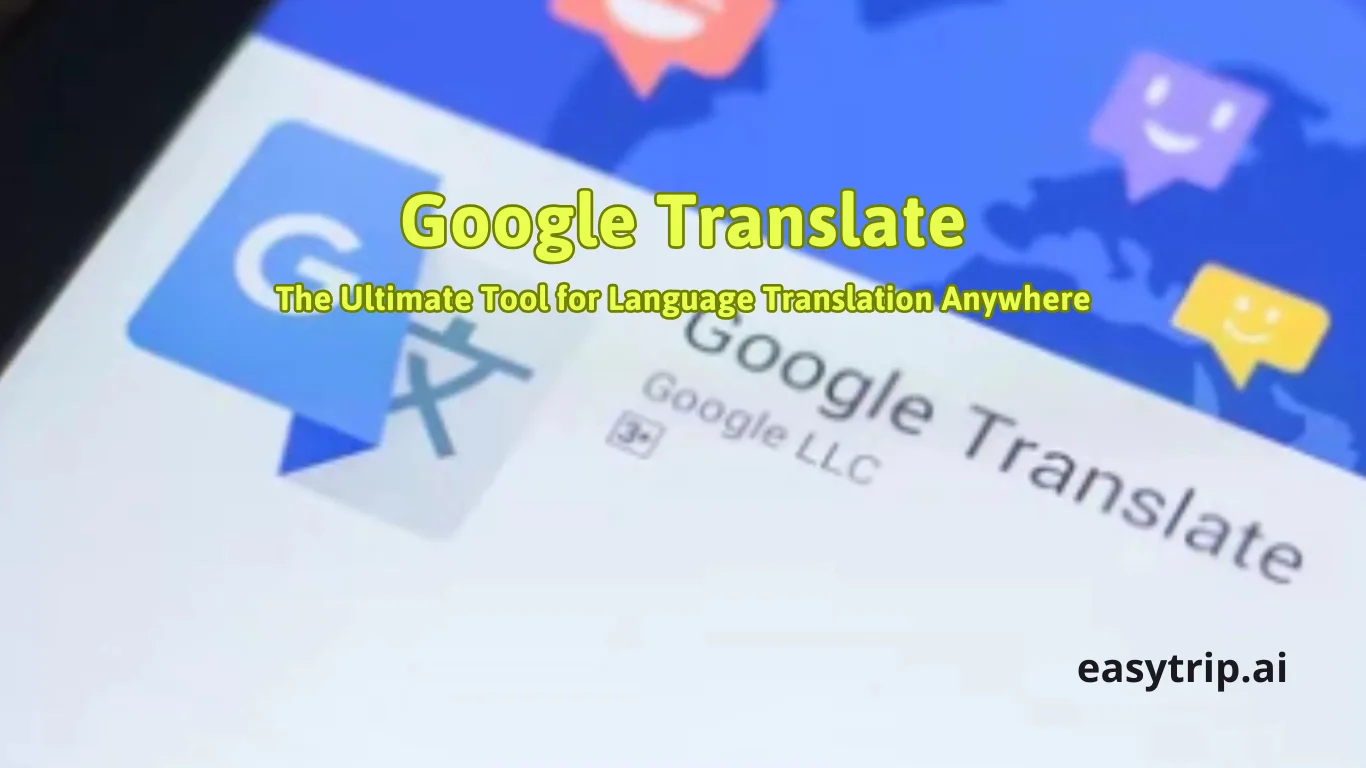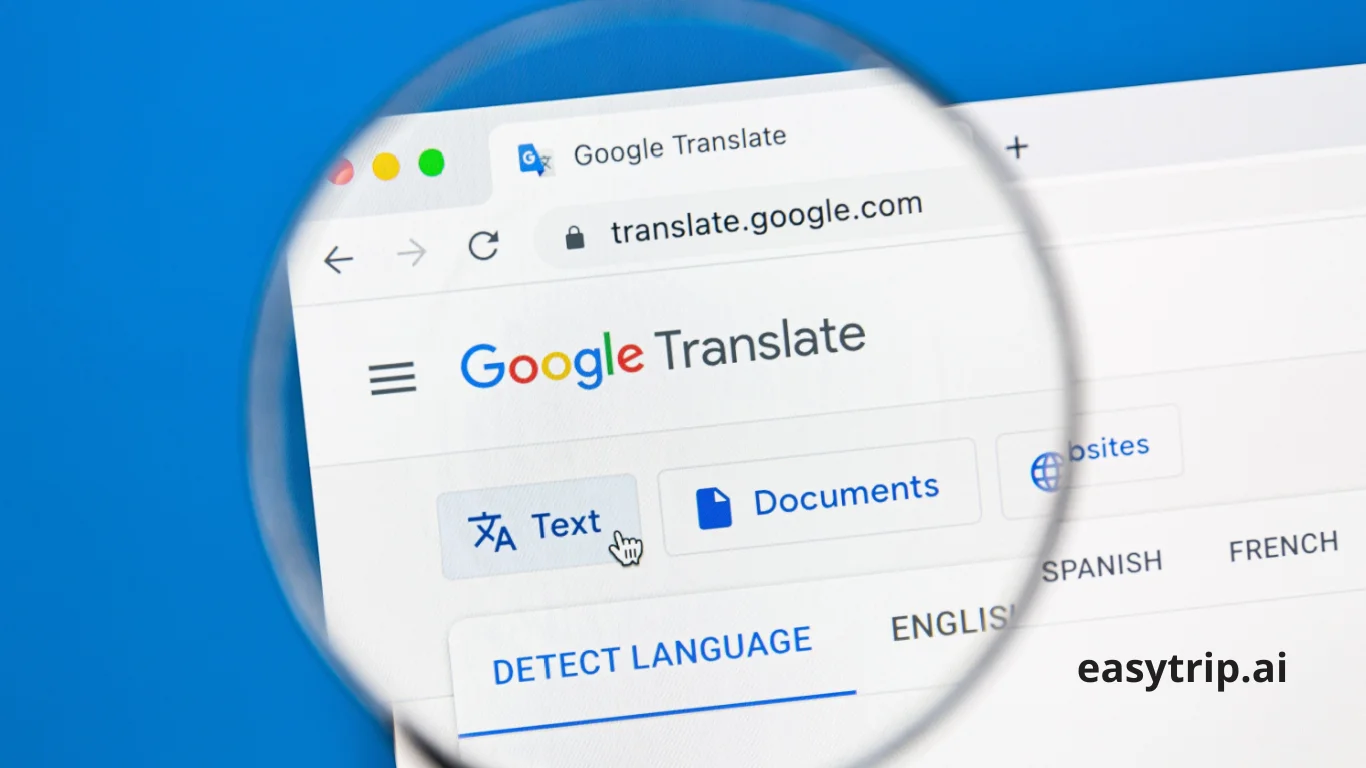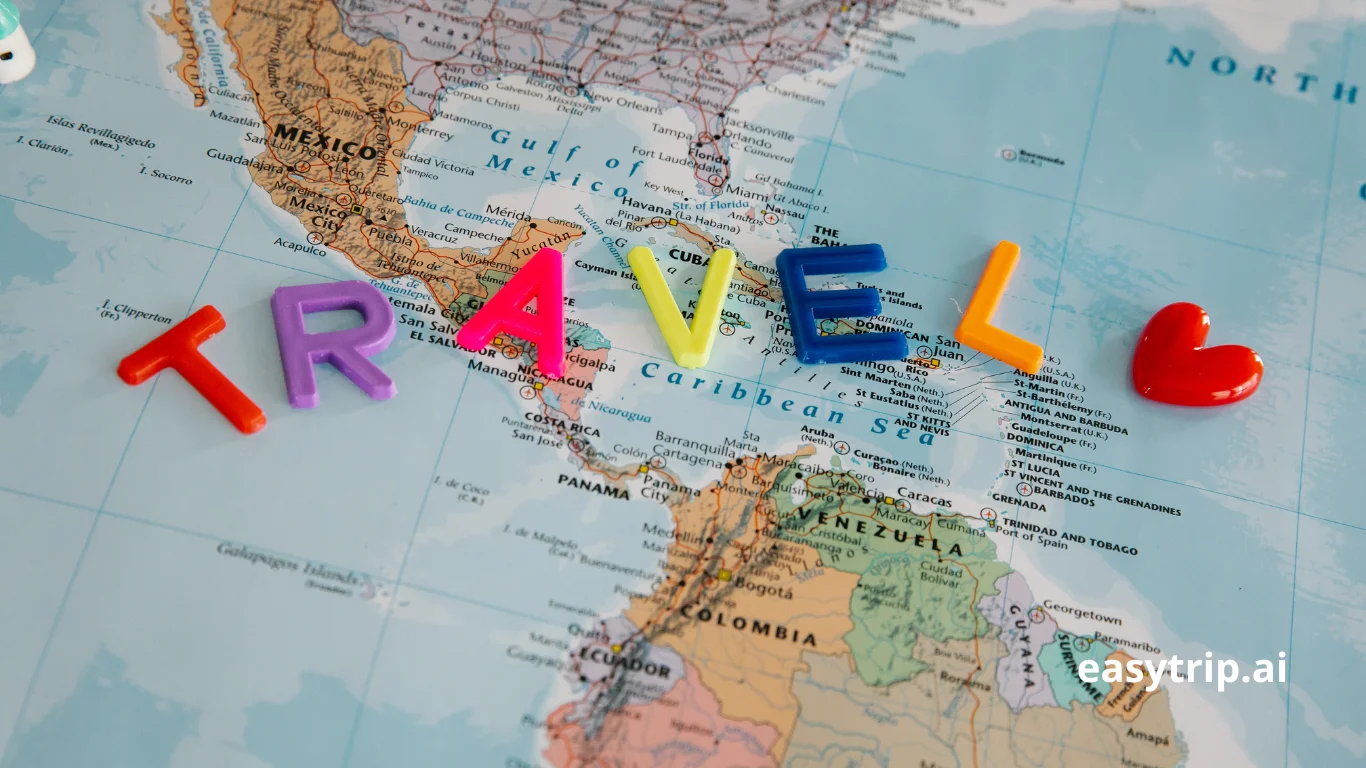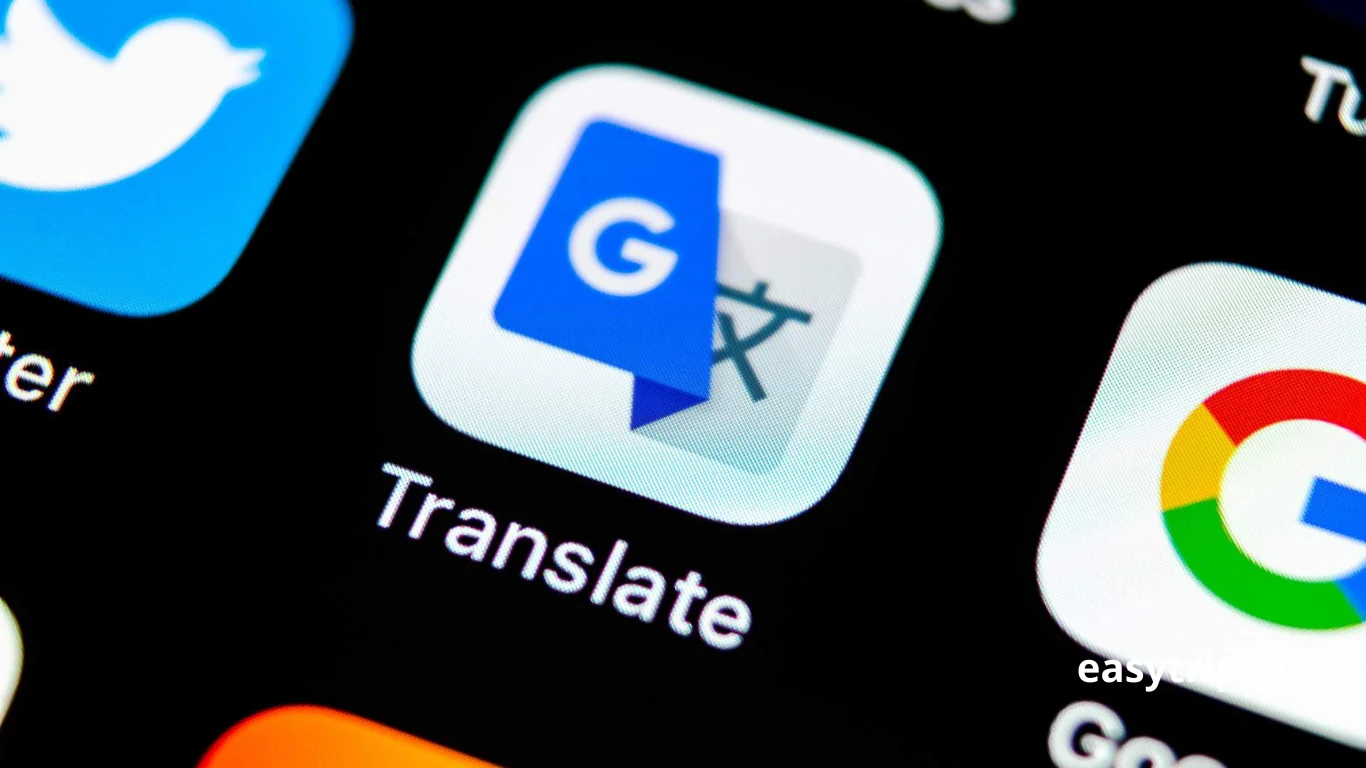In an increasingly interconnected world, the ability to communicate across languages is more important than ever. Google Translate has emerged as a vital tool for bridging the language gap, offering users the power to translate text, speech, images, and entire websites in real-time. But what makes this tool stand out in the crowded field of translation apps? Its evolution from a basic translation service into a sophisticated platform leveraging neural machine translation (NMT) technology has changed the way we interact with languages. This article will explore the ins and outs of Google Translate, the features that make it a must-have for travelers and language learners alike, and how it serves as an indispensable companion in navigating the diverse linguistic landscape of our world.
What is Google Translate?
Google Translate is a free online language translation tool developed by Google. Launched in 2006, it began as a statistical machine translation system but has since evolved into one of the most widely used translation tools globally. Users can translate text, documents, voice, and images into over 100 languages, making it a versatile platform for anyone needing quick and reliable translations.
At its core, Google Translate works by breaking down the text and utilizing complex algorithms to provide contextually relevant translations. The platform supports different input methods, including text typing, speech input, camera translation, and handwriting recognition, allowing it to cater to a wide range of user needs.
Among its many features, the ability to translate entire web pages by simply typing the URL or using the site’s Chrome Extension is noteworthy. This functionality not only broadens access to information but also enhances the user experience while browsing foreign websites.
Additionally, the recent upgrades in the app, particularly with its neural machine translation (NMT) technology, have improved the accuracy of translations significantly. NMT assesses entire sentences rather than isolated words, leading to translations that are not just accurate but also more natural-sounding. This advancement is crucial for users who require translations that make sense in context, especially when dealing with languages that have unique grammatical structures and idiomatic expressions.
Another critical aspect of Google Translate is its commitment to continuous improvement. Google regularly updates the translation algorithms, ensuring that the translations become more precise over time. Users can also contribute to enhancing the system by providing feedback on specific translations, further refining the tool’s utility. In this way, Google Translate not only serves its immediate purpose of translating languages but also evolves through user interaction, adapting to the complexities of human communication.
Overall, Google Translate is far more than just a basic translation tool. It is a comprehensive service that aids in bridging cultural gaps and fostering understanding across diverse languages and people.
Core Features of Google Translate
Google Translate boasts a plethora of features designed to enhance user experience and cater to a variety of translation needs. Here is a brief overview of the core features offered by the platform:
- Text Translation: Translates text in over 100 languages, making it suitable for varied user needs.
- Voice Translation: Enables real-time translation of spoken language, with support for numerous languages, enhancing verbal communication.
- Camera Translation: Users can point their device’s camera at any text and receive instant translations, ideal for traveling or reading signs.
- Offline Translation: The app allows users to download language packs, enabling translations without internet access crucial for travelers in remote areas.
- Website Translation: Users can translate entire web pages, ensuring they can access foreign websites without language barriers.
These core features underscore Google Translate’s versatility, making it an ideal choice for both casual users and professionals. The seamless integration of these functions contributes to a comprehensive translation solution that simplifies communication in an ever-connected global landscape.
Text Translation
The text translation feature is at the heart of Google Translate, providing users with the ability to convert written text from one language to another almost instantaneously. With support for over 100 languages, this functionality is not just limited to widely spoken languages like English, Spanish, or French it also includes numerous less common languages, making it a truly global tool.
- Real-Time Translation: Users can input text and receive translations instantly, allowing for rapid communication. This feature is particularly valuable during conversations where quick responses are necessary.
- Document Translation: Beyond simple text, Google Translate offers the capability to translate entire documents. Users can upload files in various formats, including .docx and .pdf, for comprehensive translations without the need for additional software.
- Language Suggestions: The interface provides language suggestions based on the input text, which helps users ensure they are translating into the desired language.
- Dynamic Changes: As the user types, the app updates the translation, providing an iterative feedback loop that can help clarify meanings and contexts.
Google Translate facilitates not just language comprehension but also broader access to information that might otherwise be limited by language barriers. For instance, students, researchers, and casual users can read articles in languages they may not be fluent in, thus learning from diverse sources.
Voice Translation
Voice translation has become one of Google Translate’s standout features, revolutionizing the way users communicate in multilingual settings. This function supports over 50 languages and allows for real-time speech-to-speech translations.
- Real-Time Communication: Users can engage in verbal conversations across language divides. For instance, while traveling, a tourist can converse with a local in their native tongue, breaking down barriers and fostering connections that might otherwise seem impossible.
- Speech Recognition: Leveraging advanced voice recognition technology, Google Translate accurately interprets spoken language, minimizing errors that could arise from manual input.
- Embedded Context: During translations, the app considers the surrounding context, leading to more nuanced and coherent translations. This is particularly crucial for languages with varying levels of formality or complexity.
- Multi-User Support: Google Translate’s conversation mode enables dialogue between two users speaking different languages, enhancing interactions in diverse settings, from casual discussions to formal meetings.
This feature not only enhances communication but also promotes a deeper engagement with others, enriching travel experiences and cultural exchanges. Whether you’re ordering food at a restaurant or participating in a business meeting, voice translation equips users with the tools needed to navigate through language barriers effectively.
Conversation Mode
Conversation mode is a game-changer within Google Translate, allowing users to have face-to-face interactions without the frustration of language barriers. This feature is vital for those who frequently travel or engage with international clients, as it transforms verbal communication.
- Seamless Interaction: Users can converse naturally as the app automatically detects spoken languages and translates them in real time. This removes the need for users to switch languages manually, making it easier to focus on the conversation itself.
- Voice Input: With the capability to recognize and process spoken language, the app can deliver translations almost instantaneously. Users can speak in their language and listen to the translation spoken aloud, making the conversation flow much smoother.
- Multi-Participant Capability: This mode supports interactions among several participants, expanding its usefulness in group settings where multiple languages are spoken.
- Accessibility: By making it easy for people from diverse linguistic backgrounds to communicate, conversation mode enhances social interactions, cultural exchanges, and even negotiations in business contexts.
The convenience of conversation mode highlights Google Translate’s pivotal role in today’s globalized world, facilitating connections that span across cultures and languages.
Camera Translation
One of the standout features of Google Translate is its camera translation capability. This functionality allows users to utilize their device’s camera to translate written texts in real time, offering a powerful tool for travelers and language learners alike.
- Instant Text Recognition: Users can point their camera at text whether it’s a sign, menu, or document and receive immediate translations overlaid on the original text. This feature is especially useful in unfamiliar environments, allowing for effortless navigation and comprehension.
- Offline Functionality: Users can download language packs, enabling camera translation even in areas without internet access. This capability is invaluable for travelers venturing to remote locations where connectivity may be limited.
- Ease of Use: The interface simplifies the process; users simply need to open the camera function within the app, direct it towards the text, and the translation appears onscreen. This user-friendly design eliminates the stress of manual translations.
- Wide Language Support: The camera translation feature supports over 100 languages, broadening its accessibility and application across various geographical contexts.
This functionality not only enhances the travel experience but also contributes positively to users’ engagement with different cultures. By facilitating instantaneous comprehension of written content, camera translation helps users feel more connected and less isolated in foreign environments.
Handwriting Recognition
Handwriting recognition is an often-overlooked feature of Google Translate, yet it offers immense value, especially for languages with complex scripts or characters. This functionality allows users to draw characters or write phrases on their devices, facilitating translations where typing may be impractical.
- Versatile Input Method: Whether you’re traveling in a country where the script is unfamiliar or working with a language that does not have a standard keyboard, handwriting recognition empowers you to communicate effectively.
- Instant Translations: As users write, the app translates the input in real-time, providing immediate feedback that is crucial for learning correct spellings and usage in different languages.
- Support for Multiple Scripts: From Asian scripts to Arabic calligraphy, handwriting recognition is beneficial across a wide spectrum of languages, making it an essential tool for any traveler or language enthusiast.
- Interactive Learning: This feature encourages users to engage with the language actively. By writing out words and phrases, users can reinforce their learning and better understand the language structure.
By leveraging handwriting recognition, Google Translate caters to unique linguistic needs, enhancing user experience and providing effective solutions for overcoming language barriers.
Offline Translation
Offline translation is one of the most significant advantages of Google Translate, especially for travelers venturing into areas with limited internet access. This feature allows users to maintain translation capabilities, ensuring effective communication wherever they are.
- Downloading Language Packs: Users can download specific languages they require, which can then be accessed without an internet connection. This foresight is crucial for maintaining connectivity in rural or remote areas.
- Comprehensive Functionality: Offline translation supports various input types including text input, voice, and camera translation ensuring that users can communicate effectively no matter their situation.
- User-Friendly Setup: The process for downloading language packs is straightforward; users simply navigate through the settings to select the required languages, making it accessible even for those who may not be tech-savvy.
- Reliable Tool for Travelers: Having offline capabilities allows travelers to confidently navigate foreign environments without the stress of finding Wi-Fi or mobile data connections.
Offline translation reinforces Google Translate’s position as a go-to tool for global communication, ensuring users can connect and engage with others, regardless of connectivity challenges.
Why Use Google Translate While Traveling
When traveling, language barriers can significantly impact your experience, and Google Translate proves to be invaluable in this regard. With its array of features, including text and camera translation, users can easily access translations in real-time, making interaction with locals more manageable and enriching.
Moreover, the ability to download specific language packs for offline translations ensures that travelers maintain their communication lines, even in remote areas where internet connections might falter.
Using Google Translate allows users to not only navigate foreign environments but also engage more deeply with local cultures, making the travel experience more enjoyable and personal.
Breaking Language Barriers Instantly
Language barriers can place a strain on communication, but Google Translate emerges as an efficient solution to overcome them. The app’s ability to provide immediate translations enables travelers to navigate new environments seamlessly.
- Combining Features: By leveraging text, voice, and camera features, users can adapt their translation methods based on the context. Whether reading a menu, asking for directions, or engaging in conversations, the app provides instant access to translations.
- Feedback Loop: Users can interact with locals and get immediate help or corrections. This encourages a dynamic and engaging conversation, often leading to deeper cultural exchanges.
- High Language Variety: With support for over 100 languages, Google Translate allows travelers to interact in areas where English is not the primary language, fostering more intuitive cross-cultural communication.
By removing language barriers, Google Translate empowers travelers to build more genuine connections with the places they visit, facilitating smoother interactions and enriching their traveling experiences.
Reading Signs, Menus, and Directions with Ease
Navigating a new country can be daunting, especially when confronted with foreign signs, menus, and directions. Google Translate simplifies this process through its camera translation feature, which allows for real-time text translations.
- Menu Deciphering: One of the most frequent challenges travelers face is understanding local cuisine offerings. By pointing their camera at a menu, users can instantly view translations that help make informed dining decisions.
- Sign Interpretation: Whether directions on the streets or instructions in public spaces, camera translations help users make sense of their surroundings. This reduces anxiety and enhances exploration, allowing for a more enjoyable trip.
- Location Awareness: With clear translations, travelers can easily find their way around unfamiliar cities, ask locals for help, and engage with their environment meaningfully.
The ability to read signs, menus, and directions with ease through Google Translate not only enhances confidence but also encourages exploration, allowing users to immerse themselves more fully in local cultures.
Communicating with Locals Without Knowing the Language
The real beauty of travel often lies in connecting with locals, sharing stories, and exploring cultural nuances. Google Translate opens up these interactions, enabling smooth conversations despite language barriers.
- Real-Time Conversations: Utilizing voice translation features means users can engage in dialogues without needing to understand the other language. This facilitates spontaneous interactions, from asking for directions to making acquaintances along the way.
- Cultural Exchange: Engaging in back-and-forth conversations enriches the traveler’s experience and provides insights into local customs, traditions, and perspectives. This mutual engagement can lead to memorable encounters that go beyond basic tourism.
- Social Connections: Whether at a café, market, or on the street, knowing Google Translate can turn a quick visit into a meaningful exchange, allowing users to form bonds with locals.
Google Translate serves as a bridge for cultural exchange, fostering genuine connections between travelers and the communities they visit, making the travel experience richer and more rewarding.
Understanding Local Culture and Etiquette Through Translation
Travel is not merely about seeing new places; it is also about understanding the culture that defines those places. Google Translate plays a critical role in this learning process by facilitating conversations that teach users about local customs and etiquette.
- Contextual Understanding: Through instant translations, travelers can engage with locals about customs they may not be familiar with, asking questions freely and gaining deeper insights into social norms.
- Ease of Communication: With the stress of language barriers removed, travelers can learn key phrases and culturally significant terms, enhancing their interactions and showing respect for local practices.
- Navigating Social Hierarchies: Understanding the right language to use in formal versus informal settings is crucial. Google Translate can provide translations tailored to these contexts, helping users avoid embarrassments in unfamiliar situations.
By employing translation to access cultural nuances and etiquette, Google Translate creates opportunities for travelers to engage in meaningful dialogue that enhances their overall experience and appreciation for the destinations they visit.
Tips for Effective Use of Google Translate
While Google Translate is a powerful tool, maximizing its benefits requires some strategic planning. Here are valuable tips to ensure you get the most out of your translation experience:
- Download Languages in Advance: Before traveling, ensure that you download necessary language packs for offline use. Having these ready ensures uninterrupted translation capabilities.
- Use Camera Translation for Reading Text: Utilize the camera functionality to read signs and menus. This feature can significantly ease the process of navigation and dining.
- Familiarize Yourself with Common Phrases: Practice commonly used phrases; the app’s audio feature can help you with pronunciation and enhance verbal communication.
- Research Cultural Contexts: While Google Translate provides accurate translations, understanding local phrases and etiquette deepens your interactions. Doing some research or asking locals can enhance the experience.
- Be Aware of Formality: Different cultures have varying levels of formality in language. Adapt your translation style accordingly, which Google Translate allows by customizing intended contextual tones.
By adhering to these tips, users can effectively utilize Google Translate, ensuring that their interactions are not only successful but also enriching.
When to Trust Translations and When to Double-Check
Despite Google Translate’s impressive capabilities, users must recognize its limits, particularly when it comes to nuanced or complex translations. Knowing when to trust the translations and when to seek alternatives is crucial.
- Simple Phrases are Best: For straightforward, commonly used phrases, Google Translate generally provides reliable translations. This feature can be particularly useful for everyday interactions.
- Verify for Important Documents: For essential documents such as legal papers, contracts, or medical information double-checking translations with a professional translator or native speaker ensures that accuracy is maintained.
- Watch for Idioms: Google Translate may struggle with idiomatic expressions or colloquialisms. When faced with interpreting metaphorical language, it’s best to consult someone fluent in that language.
- User Suggestions Are Valuable: The app often allows user feedback for specific translations. Users can contribute their interpretations to improve the translation quality over time.
By exercising discretion through Google Translate, users can confidently address language needs while ensuring that communications maintain accuracy and cultural sensitivity.
How to Save Common Phrases for Quick Access
Google Translate not only provides translations but also allows users to personalize their experience by saving commonly used phrases for quick access. This functionality can significantly streamline future interactions.
- Favorite Translations: Users can tap the star icon next to any translation, adding it to their favorites. This personal phrasebook can then be accessed later, saving time during subsequent interactions.
- Quick Reference: Saving frequently used phrases, such as greetings or questions about local attractions, makes communication more efficient. This preparation results in smoother conversations with locals.
- Creating Organized Categories: Users can categorize phrases based on context such as dining, travel, or emergency situations to easily find the appropriate translations when needed.
- Consistent Updates: Regularly revisiting the phrasebook to include newly learned terms ensures that translations remain relevant and personalized to individual language needs.
By effectively utilizing this feature, users can navigate new linguistic spaces confidently, ensuring effective communication is just a tap away.
Best Practices for Offline Translation in Remote Areas
When traveling to remote areas with limited connectivity, the ability to translate remains invaluable. Employing the following best practices can enhance the effectiveness of Google Translate and help maintain communication:
- Preload Necessary Language Packs: Ensure to download the required language packs before your trip to guarantee offline access.
- Know the App Features: Familiarize yourself with these features, like text, voice, and camera translations, for various situations.
- Check Language Support: Not all translation apps offer the same language coverage. While Google Translate has extensive support, acknowledge that some languages might yield less accurate results.
- Seek Contextual Understanding: For languages rich in cultural context, exploring usage examples or idioms beforehand can aid comprehension.
- Regularly Update Language Packs: Keeping the app updated ensures you benefit from the latest features and translation improvements.
Employing these best practices empowers users traveling in areas with limited internet access, ensuring fruitful communication remains possible despite connectivity challenges.
Integrating Google Translate with Other Travel Tools
Using Google Translate in conjunction with various travel tools can significantly enhance your experience, making your journeys smoother and more enjoyable.
Using Google Translate with Google Maps
The integration of Google Translate with Google Maps provides an exceptional advantage for travelers.
- Instant Sign Translation: As users navigate, they can quickly translate street signs and directions on the map. This offers clarity in unfamiliar surroundings.
- Restaurant Menu Assistance: The combined use of these tools allows users to access translated menus of nearby restaurants, facilitating informed dining choices.
- Enhanced Itinerary Planning: Incorporating translation for local attractions helps clarify information and ensures users can benefit from locals’ recommendations.
By integrating Google Translate with Google Maps, travelers gain a holistic approach to navigation, enhancing their ability to explore new places without the fear of language barriers slowing them down.
Combining Google Translate with EasyTrip AI
The collaboration between Google Translate and travel planning tools like EasyTrip AI amplifies the benefits for travelers.
- Personalized Recommendations: With Google Translate embedded, users can access tailored travel suggestions in their preferred language, ensuring relevance and ease of understanding.
- Streamlined Itinerary Creation: The ease of converting travel recommendations into manageable, task-oriented lists stands out, assisting users in visualizing and planning their trips effectively.
- Exploring Local Attractions: Users gain insights about local events, cultural practices, and destination highlights, making their travels engaging and enriching.
The integration of Google Translate with EasyTrip AI offers a comprehensive and user-friendly travel planning experience, highlighting how advanced tools can collaborate for better user experiences.
Translating Reviews, Tickets, and Local Recommendations
When planning a trip, the ability to understand reviews, ticket information, and local recommendations is crucial. Google Translate aids in this aspect by facilitating access to multilingual information.
- Understanding User Reviews: Translations of reviews in various languages allow users to gauge the quality of services and sights, leading to well-informed travel decisions.
- Interpreting Ticket Details: Important details like timings, restrictions, and requirements can be translated, ensuring clarity and avoiding potential pitfalls during travel.
- Ensuring Local Insightfulness: Local recommendations, which often reflect deeper cultural insights and experiences, become accessible through translation, enriching the travel experience.
Utilizing Google Translate to bridge communication gaps when reviewing and understanding travel information significantly enhances user experience, providing a richer and more fulfilling journey.
Conclusion
Google Translate stands as a powerful ally in the pursuit of cross-language communication, particularly when traveling. Its diverse features ranging from text and voice translation to camera capabilities and optional offline access transform the way users interact with foreign languages, enabling smoother navigation, enriched cultural exchanges, and greater access to information.
As the app continues to evolve with cutting-edge AI technologies, its relevance in an increasingly globalized world only becomes greater. By understanding how to leverage its capabilities effectively, users can enhance their travel experiences and foster meaningful connections across cultures and languages. Embracing tools like Google Translate is essential for navigating the complexities of modern communication, ensuring that language barriers do not impede exploration and connection in our beautifully diverse world.




